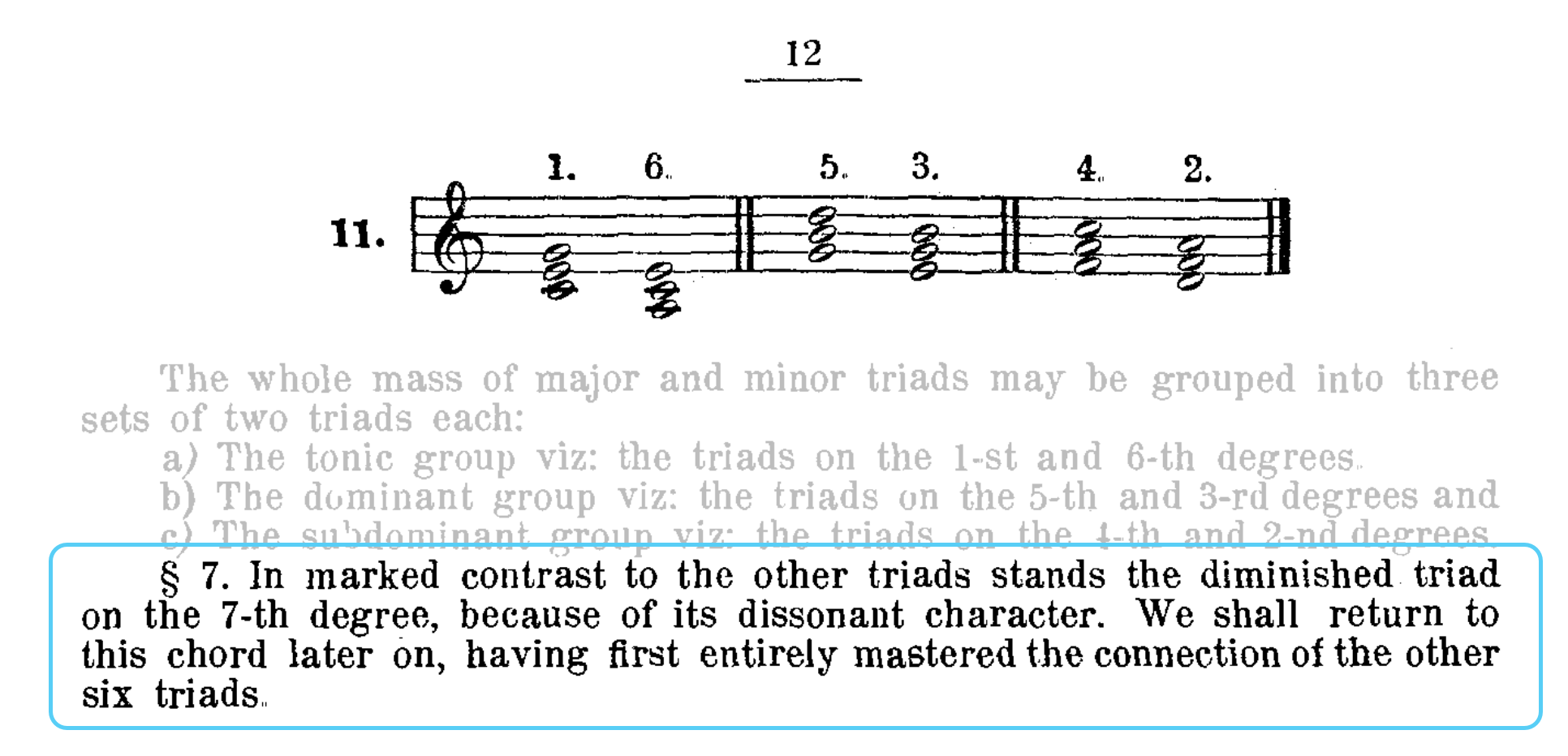Contents
2. Diatonic Chords
After all, only 7 chords can be generated under the condition “3 tones by 3rd“.
They’re made just along a scale, C major scale this time. Regardless of how many you stack or at what intervals you stack them, a group of chords made along a specific scale is called Diatonic Chords, while all the others are Non-Diatonic Chords1. These are the very basic choices for songwriting in pop music.
3 Sound Types
Looking through a musical score, those seven chords look as if they have the totally identical formation. But don’t be fooled by that! As explained before, musical score is designed to hide the uneven step structure.
Despite this aligned look, in the behind lies the magical architecture “WWSWWWS”. So the actual structure is different between chords, say, C–E–G and E–G–B. Let’s measure them accurately using semitone as unit.
You can see that there are three types of formation; Chords rooted on C,F,G are [0-4-7], chords rooted on A,D,E are [0-3-7], and a chord rooted on B is [0-3-6].
Chord of B-D-F
The chord “No.7”, B–D–F, is a problem child. The 6 semitones interval formed between B–F creates strong dissonance (≈restless, creepy, devilish sound).
- Restless mood produced by the chord of B-D-F
So in some genres it’s rarely used, and even in other genres the patterns to utilize it are limited. Frankly speaking, this chord is far less important than the other six.
3. The Six Prime Chords
It is perplexing that only one of the seven chords has special dissonance issue. Considering this, in this text, I’ll keep out the “No.7” for a while and deal only with the other six chords.
Just excluding one chord can make the theory much simpler and organized. Though it’s uncommon in regular music theory books to take such measures, this is actually an authentic method for learning music theory. For example, Tchaikovsky, who worked as a teacher as well as a composer, adopts the same manner in his book.
 Tchaikovsky, Pyotr. Guide to the Practical Study of Harmony. (p.12)
Tchaikovsky, Pyotr. Guide to the Practical Study of Harmony. (p.12)Thus trimming down the weight of study, we put priority on practically useful knowledge.
Give a Good Name
But general music theory doesn’t have a specific name for these 6 chords, which is a big problem in this course. So LMT proposes a new term for them—the Prime Chords.
- Prime Chords
- The chords in a key that fulfill the following conditions;
(1)Composed only of the tones within the key
(2)Stacked by 3rd interval
(3)Excluding the chord “No.7”. - The number of notes are not defined. Chords with more than 3 notes can be called prime chords as well.
There are countless hit songs using only prime chords. Just chaining them freely can produce decent chord progressions.
The conclusion is very simple; just stack notes every other step and you can get a set of basic sounding chords.
Theory and Feelings
That said, please remember again that you don’t have to refrain from using other chords. On the contrary, it is encouraged to try on your own many patterns. Gaining experience with various chords is beneficial for learning theory too. Since there’s a high possibility that what you find is explained later in the course of music theory, the practical experience will smoothen the process of understanding:
This is an ideal case of how you learn music theory.
In the first place, nothing can deprive you of the freedom to play whatever sound you like. Music theory just offers you the “basics”, thinking that there are too many combinations available. Once you started learning theory, it can easily happen that you unconsciously stick with what you’ve learned and stop trying unknown patterns. Be careful not to let the theory tame you. You tame the theory.
In the next section I’m gonna talk about 2 types of chords; How their sounds are different and what chord names are given to them.
Summary
- Though patterns of tones to create a chord is almost infinite, stacking “3 or 4 tones”, “along the scale”, “by the interval of 3rds” is the basic form in most Western music.
- Chords composed only of the tones within a scale (key) is called diatonic chords.
- In LMT, the six prime chords is set as the basis of theory, to construct practical & slim course.

